Nick Miniati

Nick was a vivacious child and a charmer. He was always a balance between rugged and sensitive; shy and intense; carefree and caring.
He grew up surrounded by his family, making memories with his brother, cousins, and friends whether it was playing games in the backyard, golfing, fishing, kayaking, visiting the White Mountains of New Hampshire, Chatham, the Caribbean or trips to Disney World, where he went more times than he could count!

Nick kept the people he liked close and was fiercely loyal to his family and friends. He was always there to lend a helping hand, watch sports, or just hang out.
Some of his earliest and closest friendships came from hockey, which was his passion from the first time he put on a pair of skates.

When he looked in the stands, he always saw his mom there and often other family members cheering him on. He could always find his dad watching rink side, near the goalie net because he wanted the best view of Nick when he scored a goal!
Nick carried with him his father’s voice booming: “Skate hard!
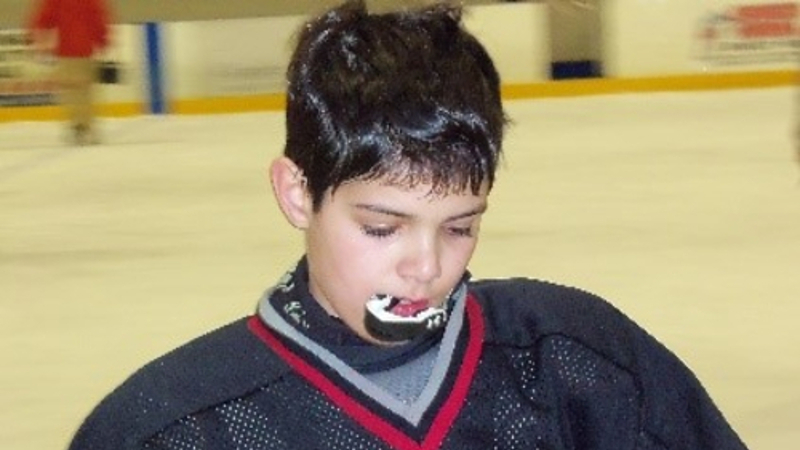
Nick played with grit and determination. He was never afraid to go up against larger opponents and battle it out in the corners. In early adolescence, he suffered two significant concussions that we sought treatment for.
But the extent of Nick’s head trauma was not limited to those two diagnosed concussions. Later in life, Nick revealed to his family how he had his “bell rung” more times than he could remember. He never considered these incidents as concussions or told us about them when they happened.

Nick hid the physical and emotional pain he was in from others. His friends never knew what he was going through and, initially, neither did we. But his suffering began to manifest in ways we could pick up on.
We noticed he had immense difficulty sleeping and was plagued by waves of headaches. He didn’t tell us when his head bothered him, but we could tell he was in pain when he had to step away from TV or video games.
His mental health also declined as he entered his early 20’s. He had mood swings. He lost his motivation and his sense of drive. He began to isolate from others and showed signs of depression.
Nick was seeing a family doctor and began seeing a therapist. There was reason for optimism from how the sessions were going. But even after seeking help, we still saw Nick suffer from many of the same problems.
On September 7, 2020, Nick died by suicide at the age of 22.
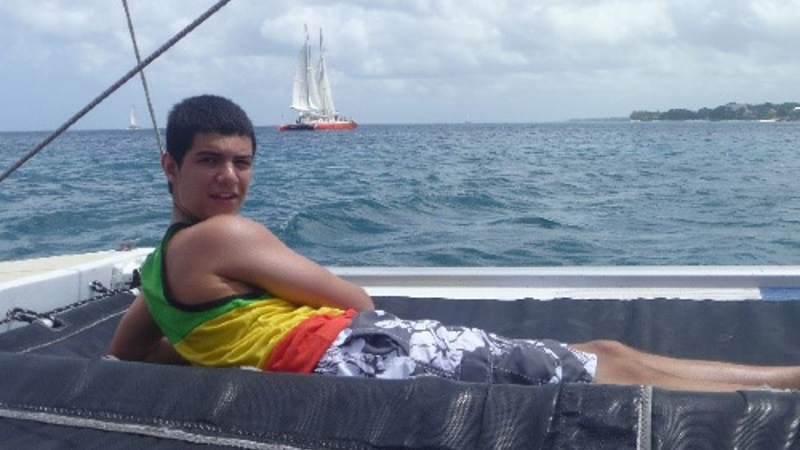
Upon Nick’s death, we donated his brain to the VA-BU-CLF Brain Bank. There, researchers found Nick did not have CTE, but said he could have eventually developed the disease later in life. Researchers also reported Nick had damage to his frontal lobe, and had brain bleeds deep inside his brain. They noted those types of brain bleeds were greater than expected for his age and may be related to his repetitive head impacts.
Our goal in sharing his story is to highlight the connection between brain trauma and suicide. A 2018 study published in the Journal of the American Medical Association found those who were diagnosed with concussion or mild TBI were twice as likely to die by suicide than those who had not been diagnosed with a concussion or mild TBI. A 2019 study from the University of Texas Health Science Center at Houston found teenagers with a history of concussions reported having thoughts of suicide and feeling sad or hopeless at higher rates than teenagers without a history of concussions. The more educated players, coaches, and parents can be about the signs and symptoms of concussion, the safer our kids can be. If you notice a change in behavior on or off the ice, speak up!

Something happened in Nick’s brain that we do not fully understand. But with more research like the work being done at the UNITE Brain Bank, we hope to prevent another family from going through the unbearable pain of losing a child.
Suicide is preventable and help is available. If you are concerned that someone in your life may be suicidal, the five #BeThe1To steps are simple actions anyone can take to help someone in crisis. If you are struggling to cope and would like some emotional support, call the Suicide & Crisis Lifeline at 988 to connect with a trained counselor. It’s free, confidential, and available to everyone in the United States. You do not have to be suicidal to call.
Are you or someone you know struggling with lingering concussion symptoms? We support patients and families through the CLF HelpLine, providing personalized help to those struggling with the outcomes of brain injury. Submit your request today and a dedicated member of the Concussion Legacy Foundation team will be happy to assist you. Click here to support the CLF HelpLine.
Andrew Mulligan
This is the story of my brother and best friend Drew.
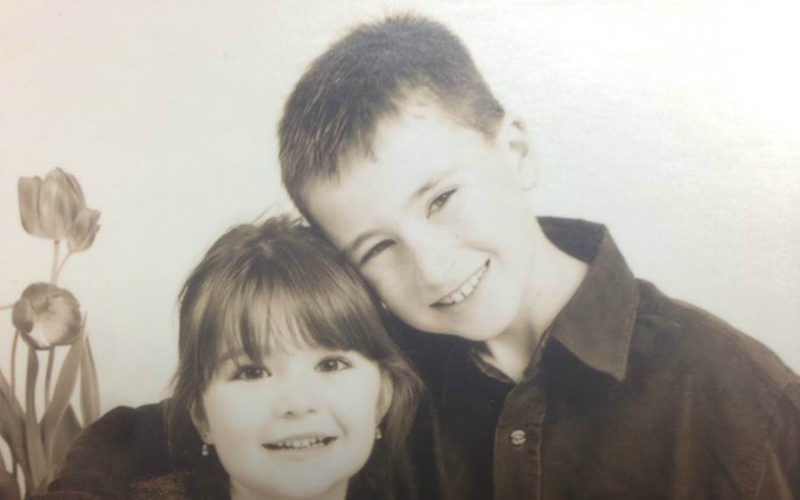
Andrew ‘Drew’ Mulligan, was born on June 15, 1993. It wasn’t much longer after that day that Drew met the love of his life: the sport of ice hockey. Being 4 years younger than Drew, I don’t remember a time where his schedule did not revolve around practices or games. I know it’s cheesy to say but he really did eat, breathe and sleep hockey. Even towards the end when things got bad, hockey always put a smile on D’s face. And for that, I am eternally grateful.
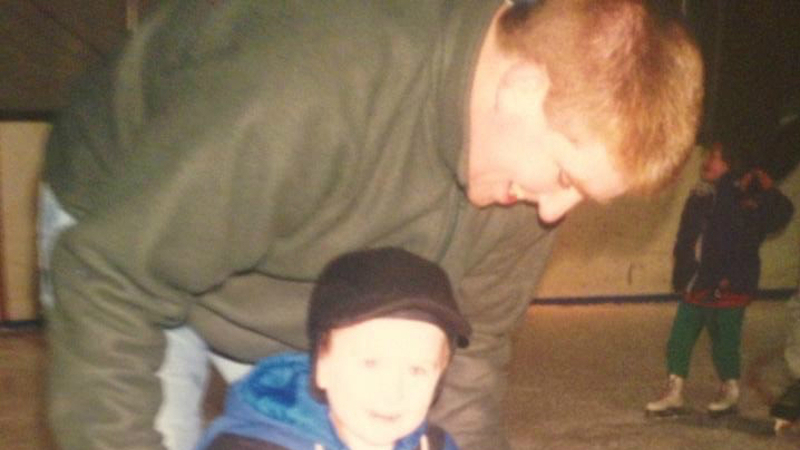
Drew played hockey his whole life, spending weekends traveling with his teams and weeknights practicing. His senior year of high school, he lived with our aunt in Pennsylvania so he could play juniors hockey. He took online classes before returning back to our local high school when the season ended. Drew graduated from RHAM High School in 2011 and then went away to North Carolina to attend High Point University.

Everything seemed to be going well for Drew. As hard as it was saying goodbye to him and adjusting to being an only child, he was happy. He quickly made friends and started to get serious about his school work. But, when I think of High Point now, one story comes to mind… one where his concussions impacted him off the ice. He was playing basketball with friends and fell, hitting his head. Luckily one of his friends from home also went to school there and he called her. Obviously, when you hear someone hits their head, it is a given that they are in a lot of pain. However, his speech was slurred and he wasn’t making much sense. This is when I began to realize how damaging head trauma is.
I always knew Drew had a history of concussions. At a very young age, he got his first one during a game. Being 6’4” and scrappy, Drew was always the first to jump off the bench to defend his teammates or run his mouth and antagonize his opponents. Being the “enforcer” comes with lots of responsibilities, but in Drew’s case, it also came with a lot of concussions.
To be honest, I am not sure just how many concussions D had in total… sometimes I felt like a simple bump of the head brought on symptoms. Sometimes, I think he wouldn’t say anything because he didn’t want to be taken out of the game. But, it wasn’t until the last concussion that made brushing them under the rug impossible.
I will never forget where I was when I got the phone call saying that everything changed for the first time. He had come home from college his freshman year and joined another junior hockey team in Massachusetts. I was at my friend’s house when the home phone rang for me. It was my mom. I always had a fear of not being at Drew’s game in case something happened. 9 out of 10 games he was ok… This game he wasn’t. Someone checked him, but it was not a normal check. The other kid’s stick was pushed against his chin, popping Drew’s helmet off. When he landed, his head hit the boards then the ice. My mom had said he was coming home after going to the hospital.
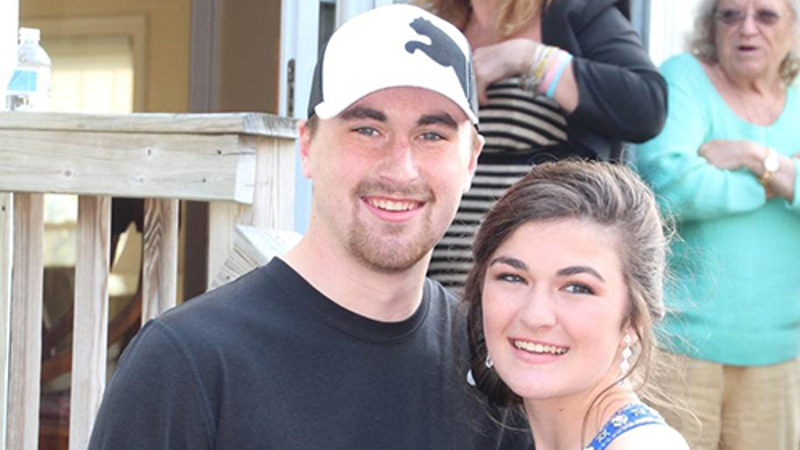
When he came home, he was out of it and in a lot of pain. His last memory was being hit, but he completely forgot the process of going to the hospital and getting home. After going to the doctors, they told him that his brain damage was so severe, he was never to play a contact sport again. This is when his worst nightmare came true and mine started.
After that hit, Drew was never the same. For weeks, he sat in a dark room refusing to talk to anyone. Yes, he was in pain from his concussion… but I think that what hurt more was losing hockey. Desperate to get back on the ice, he used to hide his hockey bags in the bushes in hopes my mom didn’t see.
I find it hard to verbalize who Drew was, because quite honestly, I have never met anybody like him. He was kind, but protective. He was smart, but an idiot at the same time. He was capable of being serious, but preferred not to be. After a bad day, I would come home to his freckled-face and goofy smile and no matter my mood, laugh until tears rolled down my cheeks. He made everyone laugh. Underneath his 6’4″ stature, Bauer jacket and exterior “game face,” lay a heart of gold. He would do anything for anyone if they just took the time to ask. He did everything for me. Most of what I know today, Drew taught me. Most of who I am, Drew inspired me to be.
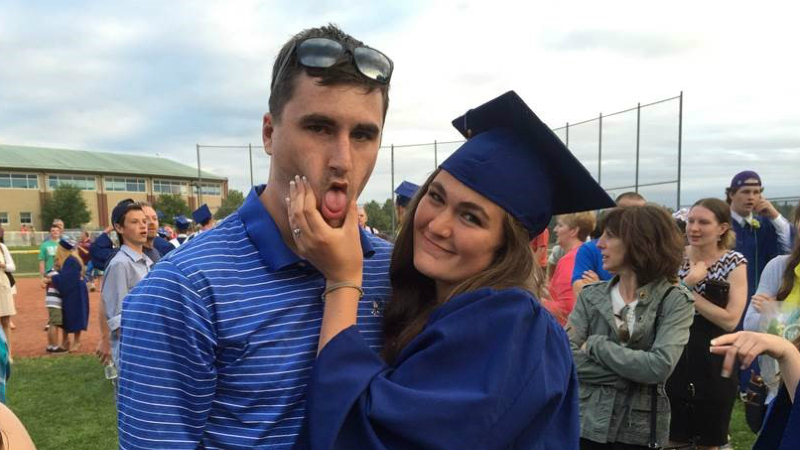
After that hit, the Drew I knew was not there anymore. His whole demeanor changed. Drew scored a 2100 on his first attempt at SATs. However, simple things that once were easy for my intelligent brother to accomplish became frustrating. School work that I used to ask him for help with became so challenging for Drew, I found myself tutoring him. He became irritated a lot faster, snapped a lot quicker and smiled a lot less.
With this being said, Drew attended trade school to become an electrician and graduated top in his class. The work, though harder for him, got done. Concentrating, which was again more difficult, was accomplished. He did it. He started playing men’s league, which was non-checking, and reintroduced hockey into his life. He got hired by a local electrician shortly after and started working immediately. He loved it. I was so proud of him. I thought things were looking up for Drew and I had high hopes that his new-found success was enough to keep him here. I so badly just wanted him to be happy.
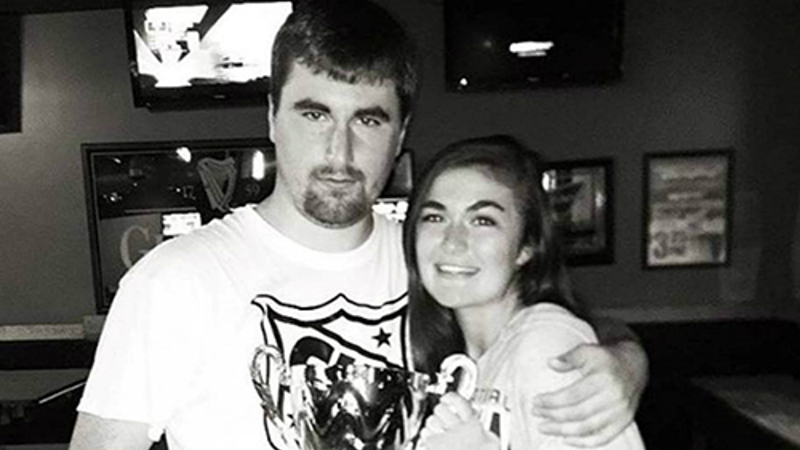
However, on February 17, 2016, Drew died of suicide. This was when my life changed forever. The pain is indescribable and every day it consumes me. It has been over a year and I still can’t understand why or how… “why did he leave, how am I never going to hug my brother ever again, why didn’t he say something that night, how am I going to live life without my best friend?” I will never get any of these questions answered.
Drew used to tell me that he knew his brain was not working and that there was something wrong. He said he could feel himself being incomplete. He felt his brain change. I so desperately wanted to help him or give him answers myself. However, at the time, there were none.
However, after deciding to donate Drew’s brain, some of my family’s question found clarity. His brain was diagnosed with chronic traumatic encephalopathy (CTE) as well as Post-Concussion Syndrome. The more I learn about CTE and PCS, the more I answer Drew’s questions. I wish I could call him and tell him he wasn’t crazy… that the changes and confusion he was feeling, he was not alone in feeling. Maybe he would still be here today if he had the answers.
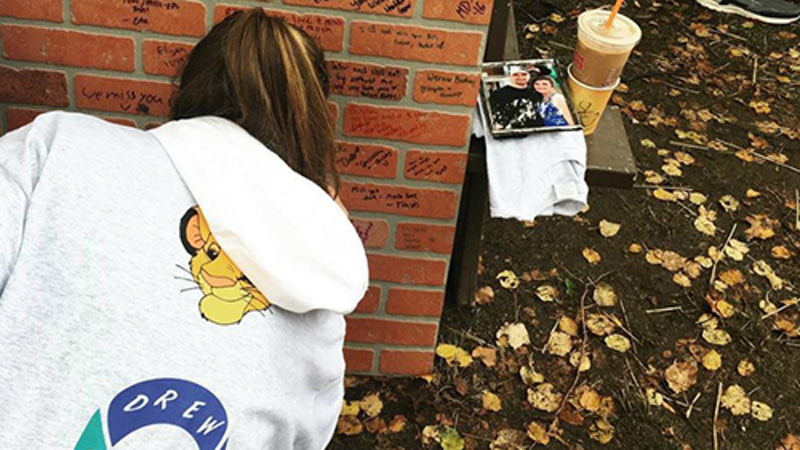
My brother’s death was my worst nightmare that every day I wish I could wake up from. But I know I never will. With this being said, what my family and I went through is something that another family should never have to experience. Drew’s death is a reminder of how important safety and observation is. No matter how bad they want to get back on the ice or field, don’t let them until they are ready. No matter how much they love the sport, no game is ever worth saying goodbye.
Although Drew’s earthly journey has ended (far too soon), his passing continues to teach me things every day. I now realize that brain injuries are not something to mess with. Although the consequences can be life-altering, if you realize the severity and the potential dangers, avoidance is possible. So, if you or anybody you know suffers from similar conditions, please please please seek proper medical attention for the sake of you and your family. Had Drew known then what I know now, things could be different. Regardless of circumstances, Drew has always been and will always be my big brother–partner in crime–bodyguard (at least he’d like to think so)–role model, but most importantly–my very best friend. I know he walks beside me each and every day and I feel blessed to even have had the opportunity to have him in my life for the time that I did. We’ll always be together in mind & in spirit, jamming to our favorite song… “Like an ocean you can’t see, but you can smell…but I do know one thing, where you are is where I belong.”
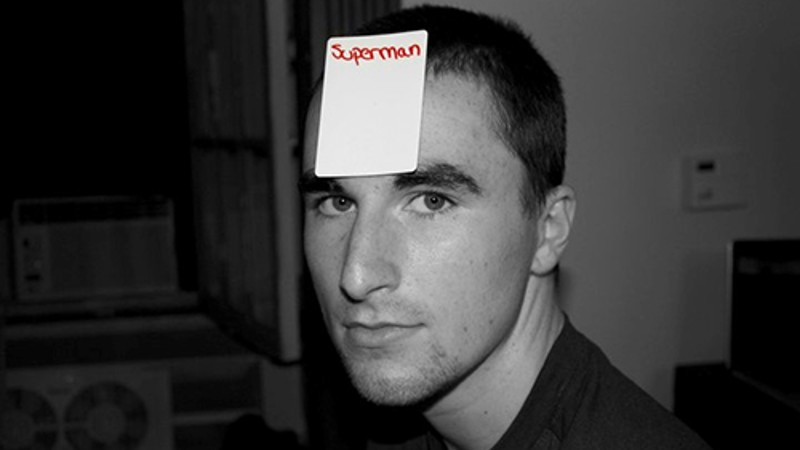
Since his passing, our family and friends have been committed to spreading the word of CTE and brain injuries. Each year we host an annual golf outing in his honor. All proceeds are donated to Boston University and the brain bank to further research and hopefully help other families.
However, I do not want his death to be the only thing his legacy stands for. I want my brother to be remembered for the happy, loving, wiseass he was. I want memories of Drew to bring smiles to people’s faces. I want Drew to be remembered as the real Drew, who he really was before CTE. With this being said, I want his absence to serve as a constant reminder to all…
No matter how much they love the sport, no game is ever worth saying goodbye.
Love you always, D
Continuing the Legacy
A five-year follow-up to Drew’s story, written by Karly Mulligan
Time is a funny thing. These past five years have managed to feel like five minutes and five decades all at the same time. It was right around five years ago that I sat down to write my original piece about my brother’s story and my family’s decision to donate his brain to CLF. A lot has changed in this time but my intentions for writing and sharing my brother’s story have remained consistent a half decade later. As is the case for many of the Legacy Donor families, the decision to donate your loved one’s brain was not an easy one. There is not a day that goes by where I do not miss him. However, personally, I think this was one of the best decisions my family and I could have made. There is power in education and knowledge. Those who suffer or suffered from brain injuries as well as their friends and family are not alone and are heard. And the efforts put forward by CLF as well as the Legacy Donor families are all striving towards making stories like my family’s no longer needing to be told. I am honored to be a part of such an amazing movement.
When I first lost my brother Drew, my baseline knowledge for concussions and the effects of brain injuries was limited. Drew was a hockey player who was labeled as an “enforcer”, so fights and concussions were not foreign concepts to me. His protective nature translated on and off the ice and his first documented concussion occurred in youth hockey at a very young age. While I knew what a concussion was, something much bigger was happening right in front of my eyes. I understood only what he was able to express to me about his symptoms, but never knew what those symptoms spelt out. As my knowledge grew, the more I was able to make sense of what my brother was describing. The headaches, the inability to focus and remember things, the irritability… it all started making sense. And while the diagnosis was not an easy pill to swallow, I personally felt like this may have been one of the last gifts I could have given my brother. This was validation for him. What he was describing was something real. What he was feeling was valid and had a medical catalyst behind it. What he struggled so hard to explain and express was finally labeled – stage 1 (of 4) Chronic Traumatic Encephalopathy and Post-Concussion Syndrome (PCS).
While I knew the diagnosis did not change that my brother’s life was over, it did spark something inside of me that has since shaped mine. Selfishly, I admit I was and still am worried that his memory will be forgotten. But, more importantly, I am worried that his passing would be in vain. As I involved myself in the CLF, it became apparent to me very quickly that my brother’s story is one that many people can relate to. My family’s grieving was one that so many others are also experiencing. Friends and teammates of my brother’s too started expressing eerily similar symptoms and experiences. I knew that even if it would touch one person who read my piece I wrote on my experience with CLF as a donor sister, then it was worth it. I applaud each and every person that has had the courage to share their stories as they truly do make a difference. The more we talk and share, the more educated people will be. This is in locker rooms, on the side lines, at dinner tables. This is looking out for friends, family and teammates being an advocate for them. This is knowing that brain trauma is real and that there are resources out there. This is knowing you are not alone and that foundations like CLF are here to help. This is knowing your story and experiences matter and your voice can make a difference.
Through finding my voice, I was fortunate to have others who also shared the same mentality as me. Family, friends and those closest to Drew also agreed that in addition to donating his brain, there was more we wanted to do to contribute. My family is forever grateful for the support we have received and continue to receive because we could not have done it alone! We have held six annual Drew Mulligan Memorial Golf Outings, which is a great day for charity as well as a conversation starter in Drew’s memory. A group of families who have been friends of ours since the start of hockey have been beyond instrumental with making that day happen. In addition, teammates, friends, teachers and supporters show up each year to not only celebrate the life of Drew, but to play golf in the name of concussion research. Each year, the proceeds are donated toward CLF and we look forward to continuing to do so. I have been fortunate enough to attend a few CLF Galas, which highlight all the progress that has been made in both education, prevention and resources available.
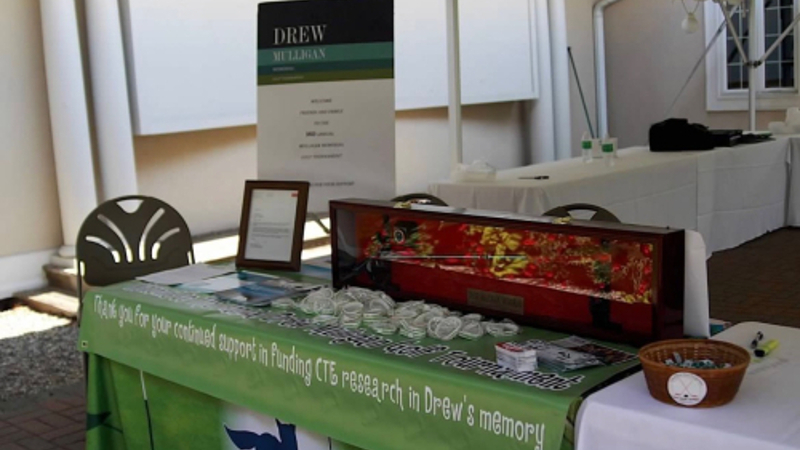
The progress made in the last five years alone has blown me away and motivates me to continue. I am excited to see where things will be in another five years let alone decades later when my kids and grandkids are playing sports. And above all, I am hopeful.
Thank you so much for reading!

Bob Murdoch
Bob Murdoch was born on November 20, 1946, in northern Ontario, Canada, the youngest of three siblings. Growing up in a small community, his family embraced an outdoor lifestyle filled with activities like baseball, football, skiing, and hockey. From an early age, Bob developed a passion for hockey, becoming exceptionally skilled at the sport.
Though he had the chance to attend an American college, Bob chose the University of Waterloo in Ontario, where he played hockey alongside his childhood friends and earned a dual degree in Mathematics and Physical Education. His contributions to the school were later recognized when he was inducted into their Athletic Hall of Fame.
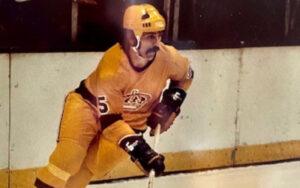
Known as “Mud” on the ice, Bob represented Team Canada and was later signed by the Montreal Canadiens, launching a remarkable 22-year NHL career that included two Stanley Cups. He played for several teams, including the Los Angeles Kings, Atlanta Flames, and Calgary Flames. After retiring as a player, Bob transitioned to coaching, leading teams such as the Flames, Chicago Blackhawks, Winnipeg Jets, and San Jose Sharks. His coaching prowess earned him the Jack Adams Coach of the Year award in 1990 for his work with the Jets. Bob also fulfilled his dream of coaching internationally, for six seasons in Germany, as well as some Olympic and World Championship events. At age 55, Bob decided to retire to spend more time with his family.
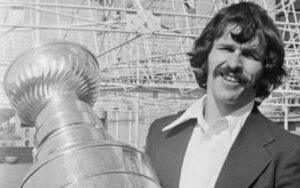
Bob married in 1972 and had four children from his first marriage. In 1986, he married his current wife, Bev, with whom he had two more children. Bob was a devoted husband, father, and grandfather, leaving a lasting positive impact on everyone he met. His infectious smile, quick wit, and playful humor endeared him to many.
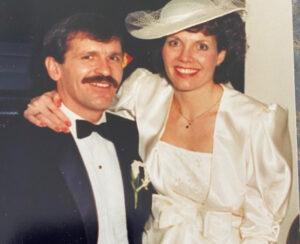
In addition to family time, Bob enjoyed traveling, fishing, gardening at his summer cottage, cross-country skiing, and playing old-timers hockey.
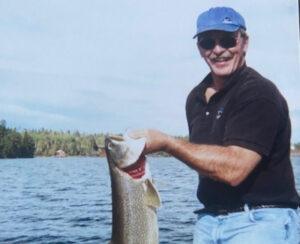
Around the age of 65, Bob developed atrial fibrillation, a condition which ran in his family. He began experiencing vivid dreams of fighting other hockey players and, after struggling with snoring, eventually got a CPAP machine for sleep apnea. Despite these health issues, Bob did not connect them to dementia or CTE.
In 2017, a memory test showed Bob scored 30 out of 30, reassuring the family there were no immediate concerns. However, in late 2018, a neurologist noted some irregularities in his movement and suspected mild Alzheimer’s disease. Subsequent MRI and PET scans in mid-2019 led to a diagnosis of probable Lewy Body Dementia and Alzheimer’s. Although CTE was discussed, it could only be confirmed post-mortem. Given Bob’s lengthy career in contact sports, the family suspected CTE might be a factor.
Despite the diagnosis, Bob remained resilient, continuing to travel and spend time with family. In early 2019, he underwent a right knee replacement and worked hard to return to old-timers’ hockey, but after just two games, he suffered a shoulder injury that ended his playing days.

Though Bob’s cognitive abilities remained stable, both his neurologist and family doctor advised him to stop driving due to worsening eyesight. He had always struggled with vision issues, stemming from a “lazy left eye” diagnosed at age five, and despite two major eye surgeries, his vision did not improve.
Over time, Bob became quieter and less his usual witty self. He stopped driving both his car and boat, and in 2020, the difficult decision was made to sell their cottage. They relocated to Canmore, Alberta, closer to medical facilities and family support. This transition felt like a series of losses, not unlike grieving.
By the summer of 2021, Bob’s condition had deteriorated significantly. Sleep became elusive, and he experienced frequent awakenings and violent hallucinations. It became necessary to place him in a private care facility near his home, with support from the NHL Alumni staff during this challenging transition.
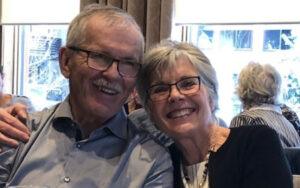
Bob entered long-term memory care in January 2022 but was hospitalized for over three months due to rapid progression of his illness. Despite never being aggressive, he exhibited threatening behavior during episodes, leading to police involvement. In the hospital, Bob faced confusion and worsening delusions. After a fall which resulted in a broken hip, he was transferred to a complex dementia care facility, where he never walked again.
On August 3, 2023, the family was called to be with Bob due to a GI bleed. He passed away later that day at the age of 76, surrounded by loved ones, filling the room with warmth and love.
Following his passing, Bob’s brain was donated to the UNITE Brain Bank for research. By March 2024, the neuropathology report revealed severe brain atrophy, CTE stage 3 (of 4), Lewy Body Dementia, Alzheimer’s disease, and TDP (ALS). The family expresses gratitude to the Boston University CTE Center and the Concussion Legacy Foundation for providing closure and a deeper understanding of Bob’s illness, knowing their research will help save lives in the future.
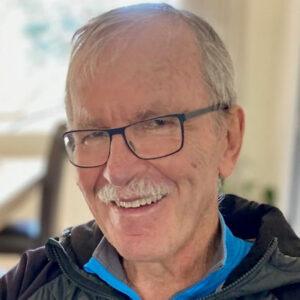
Conor O’Kane
Joe Offutt
Kory Ouellette
Robert Palmer
Ben Pearson
Eric Pelly
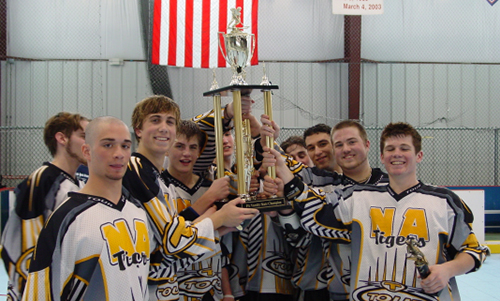
Eric was full of energy…an energy that propelled him and drew others to him. He had a gleam in his eyes, a smile on his face and a loud contagious laugh. Eric was fun; he brought life and laughter to any occasion. His passion for sports was evident from the time he was a young boy. Eric began playing in-line hockey at 6-years-old. Initially he played goalie, then the coach suggested that he play on the line because he was fast and a strong skater. Eric played on numerous hockey and tournament teams.
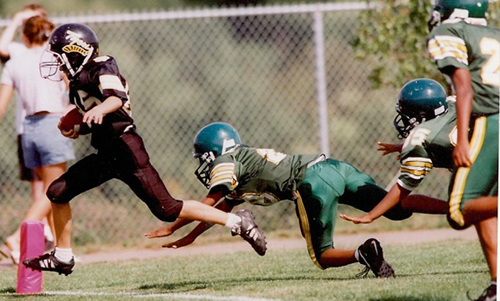
By Joan Pelly
Eric was full of energy…an energy that propelled him and drew others to him. He had a gleam in his eyes, a smile on his face and a loud contagious laugh. Eric was fun; he brought life and laughter to any occasion.
His passion for sports was evident from the time he was a young boy. Eric began playing in-line hockey at 6-years-old. Initially he played goalie, then the coach suggested that he play on the line because he was fast and a strong skater. Eric played on numerous hockey and tournament teams.
When Eric was 12-years-old, he wrote: “My favorite two sports are hockey and football. I like them because you get a lot of action. I’ve played hockey for six years and am getting tired of it. This year I finally convinced my parents to let me play football. I love football because you get even more action than hockey.”
Due to the summer time commitment, Eric decided not to play football in his junior year of high school. When the season rolled around he said “mom it’s killing me to not be on the field playing.” That’s when he became the self -appointed mascot and crowd instigator at the high school football games. He slathered his body with black and gold paint (his school colors) and draped himself with a black and gold stuffed snake. He could stir up a crowd (in a positive way)!
While always remaining active in hockey, Eric tried many other sports along the way. He swam, played baseball, soccer, basketball, track and cross country, volleyball, and football then found that he loved playing rugby.
Eric started playing rugby on the high school team but was quickly moved to the adult semi-pro team due to his passion for the game, intensity and speed. The physicality, the contact was one thing but there was something about the connection these guys had. After each home rugby match, the team would invite the opposing team to stay and join them for a cookout or pig roast at their clubhouse. They would gather there to watch the Steelers football games and the Penguins hockey games. The guys pitched in and worked to keep their field in pristine condition and the club house clean. Eric enjoyed that camaraderie.
Eric also enjoyed bicycling, skiing, snowboarding, water skiing, wake boarding, scuba diving, windsurfing, and four wheeling in a jeep wrangler. As you can see, he was active and adventurous.
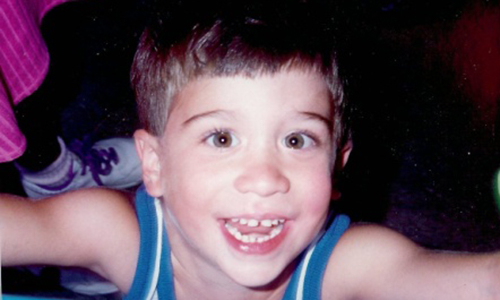
While Eric had that intense love for sports, he also had a passion for life. Family and friends meant a lot to Eric. Whatever anyone needed, Eric was ready and willing to lend a hand. He also cared deeply and was an intent listener; he had a way of making everyone feel that what they had to say was important and interesting. Eric was the son, brother, grandson, nephew, and friend that everyone loved to spend time with. He was the life of the party and always had an entertaining story or two to tell.
Faith was a huge part of who Eric was. Eric was an altar boy when he was younger, when he was a junior in high school he decided to teach 4th grade CCD (religious education). Eric managed to pack a lot into his days; he excelled academically, volunteered, and worked part time at the family business, all while playing on multiple sports teams and enjoying time with family and friends. He had a strong drive for success and passion for life itself. Anyone that knew him had no doubt that Eric could accomplish anything he set out to do.
The intensity with which Eric played sports resulted in three documented concussions; one each year for three consecutive years. The first one (in his sophomore year) playing football for his school team, the second one (in his junior year) from a pick up football game with friends and the third one (in his senior year) while playing rugby for the Pittsburgh Harlequins. That concussion received on September 30th 2006 during a rugby match was different than the others. Eric collapsed on the sidelines holding his head and groaning in pain. He was rushed to the hospital and remained there for two days. On the third day he was released and the only restriction he was given was “no contact sports for 3 months”. At that point, Eric asked if he could run and lift weights so he didn’t get out of shape. He was told that would be okay.
Eric was concerned about getting behind in his school work and pushed himself to go to school and get caught up on missed assignments. He was tired and had headaches but continued to do a little more each day. When I asked him how he was feeling and if he felt a little better each day, he said “yes.” He was released from the hospital on a Monday; one week later he went to the school’s work-out facility with a friend to lift weights.
Ten days after Eric’s rugby concussion and seven days after his release from the hospital…the day after he lifted weights…as we sat down to our family dinner and said our prayers, suddenly the unthinkable happened. Eric’s body stiffened with clenched fists, his eyes rolled back in his head and Eric collapsed with horrible sounds coming from his airway. We immediately called 911 and performed CPR until help arrived. He was taken to the hospital and pronounced dead. Eric’s brain had swollen and herniated, cutting off his breathing and heart rate.
We have since learned that Eric had sustained a head injury on September 16, 2006, just two weeks prior to the severe concussion on September 30, 2006. Eric was 18-years-old; he had recently been moved from the high school team to the adult semi-pro team. The team was driving from Pittsburgh, Pa. to Baltimore, Md. to play a match and return home that night. As I was making plans to go, Eric convinced me that I should stay home and spend the day with his younger sister. He said, “Mom, I’ll be fine, and I’m concerned about Jenna having to spend so much time at my games; spend the day doing something fun with Jenna.”
I understood what he was saying and I also understood that he was on the adult team and wanted to go with the guys. He was no longer playing on a high school team and nobody else’s mom was going to drive to Baltimore for the match. He wanted me to give him that freedom. As a mom that always worried about injuries, that was difficult for me, but I relented.
When Eric got home that evening, he was tired. He sat in the family room with us for a brief time and said he was exhausted, was going to shower and go to bed. Considering they had driven four and a half hours, played a physical match and drove another four and a half hours home, it made complete sense that he was ready to call it a day.
We were unaware that Eric had been removed from a rugby match ( just 2 weeks prior to the devastating head injury he sustained on September 30th) after a hard hit and was given ice to apply to his head on the sidelines. Eric did not tell us about that incident. It was only after his death that teammates told us about that head injury; they said, “Eric was out of it and slept the whole way home.”
Eric loved life, and I’m sure he never thought he could die from complications of a concussion nor did we (his parents). Knowing what we know now, he most certainly had other undiagnosed concussions and too many sub-concussive blows to the head to count: slamming into the boards in hockey, running full tilt into a block wall in basketball so that he could backhand the ball to a teammate keeping it in play, etc. Eric was very competitive; he was intense and aggressive in every sport or activity he participated in.
Learning that Eric’s brain showed signs of Chronic Traumatic Encephalopathy (CTE), deposits of abnormal, toxic protein, called tau) was shocking. For years we had enjoyed watching Eric give it his all as he competed in sports. He had so such passion and drive; it was fun to watch him. Eric thrived on the competition. Although I was always concerned about injuries, I didn’t know that damage could have been accumulating in Eric’s brain. All of the times that Eric accelerated and stopped quickly, his brain was hitting against the skull of his head.
I urge parents, coaches and players to become educated about concussions and sub-concussive head injuries. Never, never, never, let an athlete return to play with a brain injury that is not completely healed. No game is worth it. Emphasize this with your sons and daughters. It’s not “just a concussion”. They must understand that every head injury is serious and requires both physical and mental rest. The brain needs time to heal.
I am not trying to dissuade children from participating in sports. Playing sports has many advantages: physical fitness, confidence, learning to work hard, sportsmanship, trust and working together with teammates. All of these produce more than victories on the field-these skills are tools used in everyday life. I am promoting safer play, receiving proper care in the event of a concussion and gradual return to play when completely symptom free.
Information about concussions is much more readily available today than prior to Eric’s death. I am pleased to see all that Dr. Cantu, Chris Nowinski, Dr. Ann McKee, Dr. Robert Stern and the Concussion Legacy Foundation are doing to get the information out. Dr. Cantu’s book lists excellent questions to ask athletes following a hit or jarring of the brain.
You can read more about Eric’s story in “Concussed” by Keith Primeau and Kerry Goulet. Keith and Kerry were both professional hockey players who formed stopconcussions.com after retiring due to concussions. They work tirelessly to educate athletes, coaches and parents about concussions, emphasizing safe play and respect for oneself and the opponent, along with proper management of concussive head injuries.
It is important to our family to do everything we can to prevent a tragedy such as Eric’s from happening to anyone else. Each year, our family hosts an event to raise awareness and increase knowledge about concussive head injuries. It started as a basketball game among Eric’s friends and the teachers at his high school and has progressed to a basketball tournament with community involvement. Last year we had 34 teams compete. Kerry Goulet from stopconcussions.com captivated the attention of students, teachers, and parents with his entertaining way of delivering a very serious message.
On October 10, 2012, the 6th anniversary of Eric’s death, we showed Chris Nowinski’s “Head Games” documentary at the Harris Theater in Pittsburgh. That evening, a teacher/coach that has played in the Eric Pelly Memorial Basketball Game stated that because of what she had learned during our event, she had stood her ground and refused to allow a girl to return to a basketball game (after hitting her head) against all the resistance she received. Later that evening, the girl had a seizure and was hospitalized. Not allowing that girl to return to the game may have saved her life. It is with great pride that I say, collectively, we are making a difference.

For more on Eric’s story, read an article by MTV News here.
To learn more, please visit Eric’s website here.